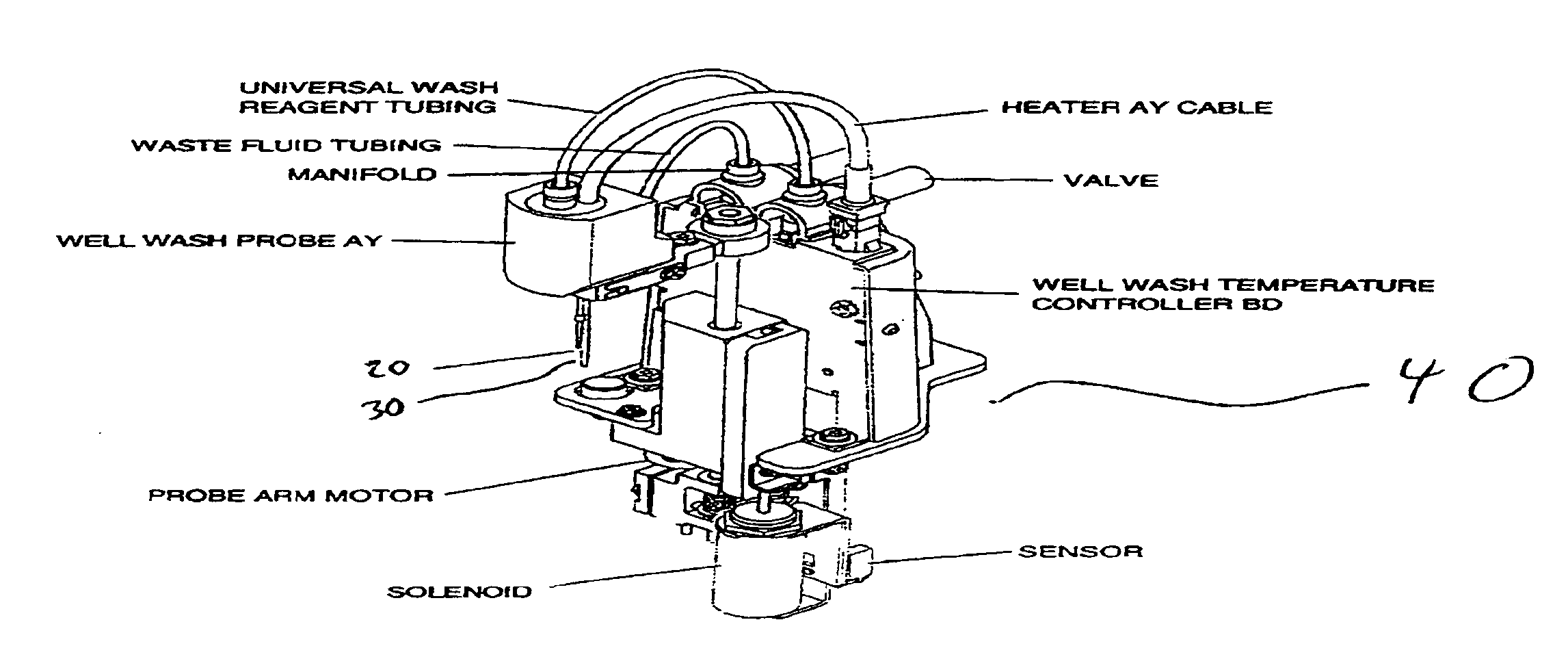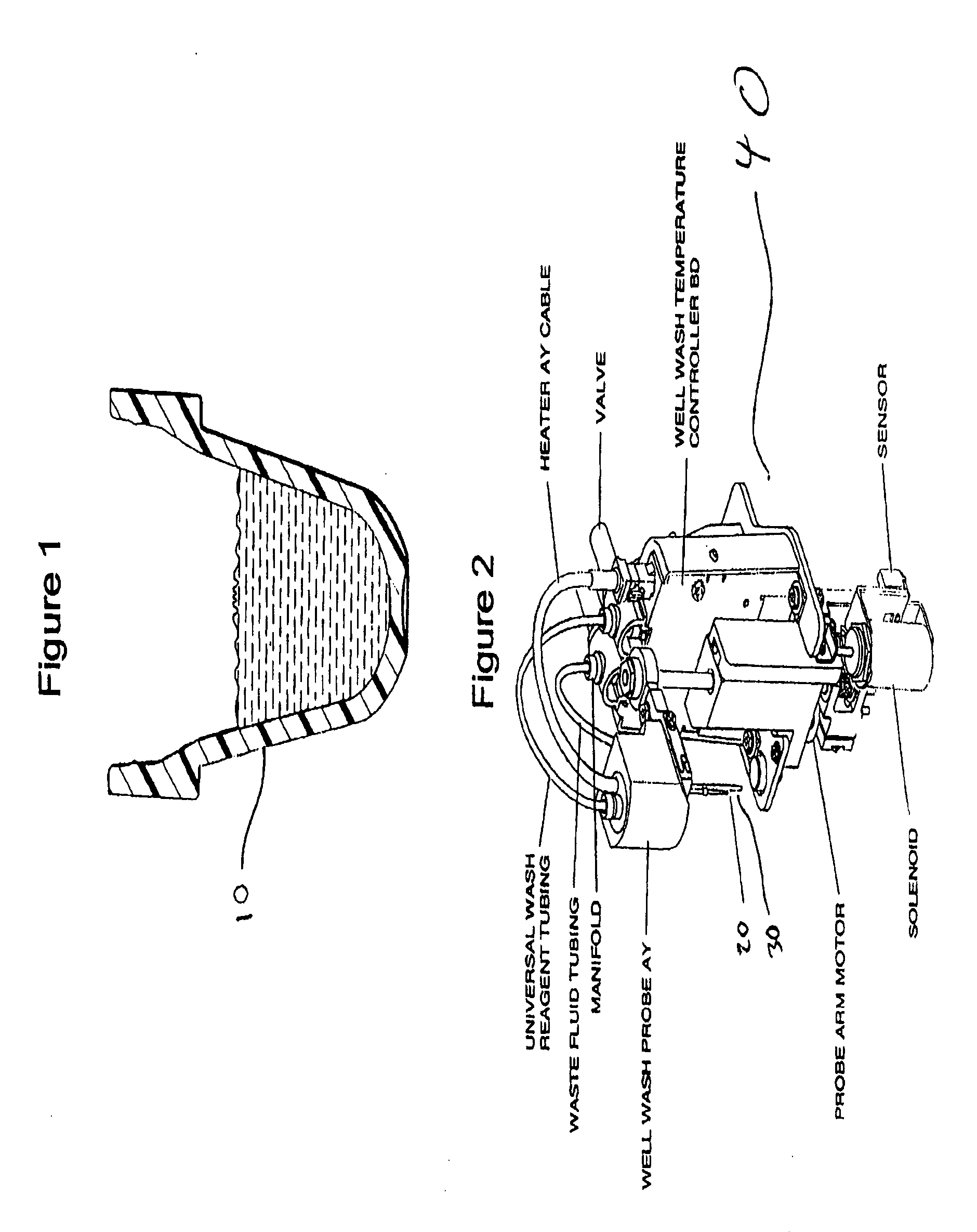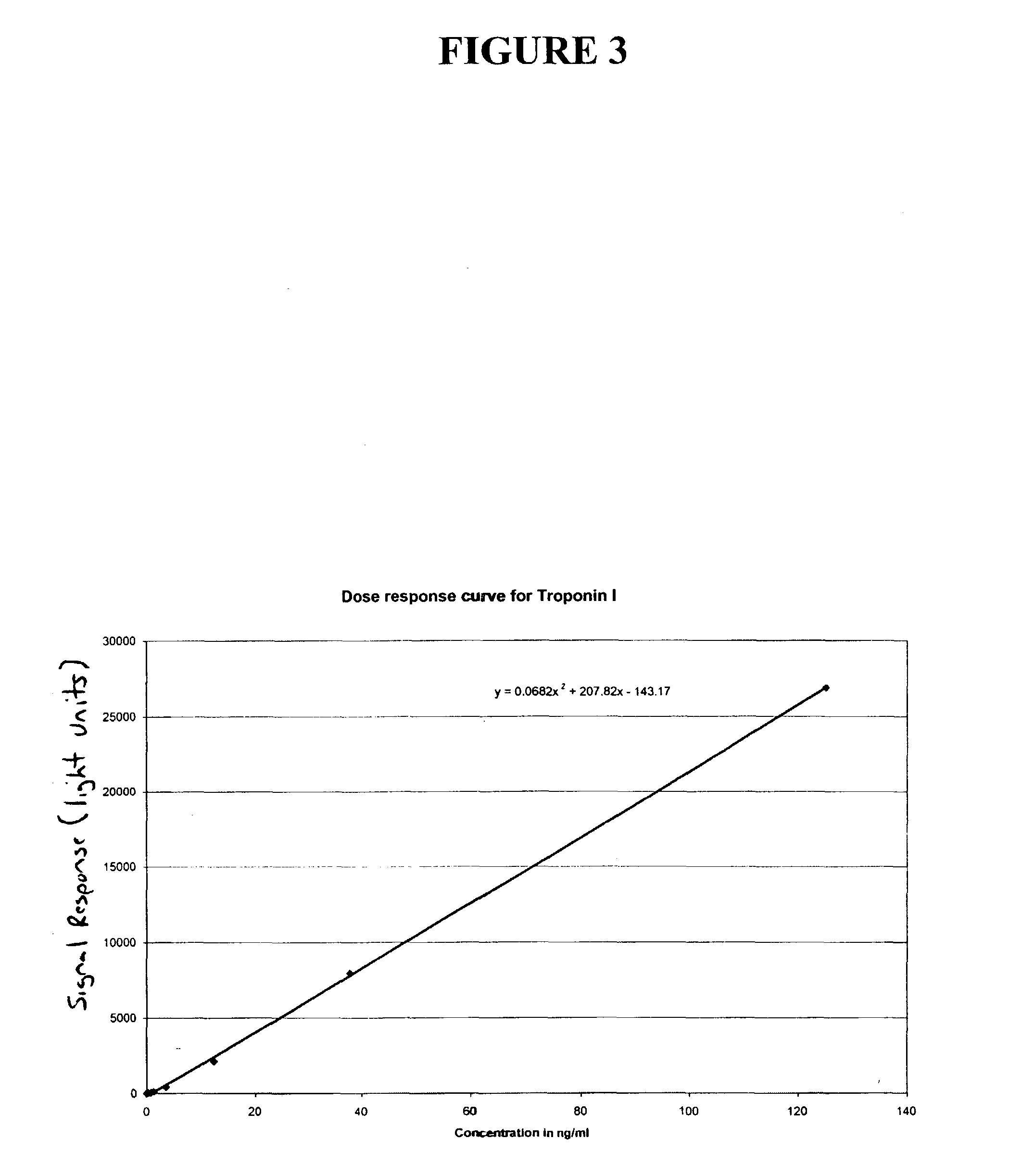Wash process for removing undesired components in samples being analyzed
a technology of undesired components and wash process, which is applied in the direction of material analysis, instruments, and withdrawal sample devices, can solve the problems of significant adverse effects on performance, contaminated outer surface of aspirating nozzles with wash fluid containing unbound materials, and large erroneous signals, so as to reduce the amount of signal from the bound fraction
- Summary
- Abstract
- Description
- Claims
- Application Information
AI Technical Summary
Benefits of technology
Problems solved by technology
Method used
Image
Examples
example 1
[0060]Biotin reagent was added to streptavidin-coated containers containing samples to initiate a reaction between biotinylated anti-cTnI antibody, the streptavidin coated container and the cTnI present in the sample. HRP conjugate reagent was also added to initiate a reaction between HRP-conjugated anti-cTnI antibody and the cTnI in the sample. The sample and reagent were then incubated for 8 minutes and 37° C. After incubation, the containers containing the samples were washed according to the present invention and according to the known wash process. Following washing, signal reagent containing a luminol derivative, a peracid salt and a substituted acetanilide electron transfer agent was added to produce luminescence that was read using a luminometer. The results are shown in the graph set forth in FIG. 5. As the graph shows, the results using the wash process of the present invention are much more consistent and have fewer outliers than the results using the known wash process.
example 2
[0061]Eight washes were performed with signal reagent aspiration as described above, and eight washes without signal reagent aspiration. The results are shown in the graph set forth in FIG. 6. As the graph shows, the results using the oscillating wash process and signal reagent aspiration of the present invention are much more consistent and have fewer outliers than the results using the known wash process.
example 3
[0062]One set of washes was performed with signal reagent aspirate and oscillating wash. Another set of washes was performed with no signal aspirate or oscillating wash. The results are shown in the graph set forth in FIG. 7. As the graph shows, the results using the wash process of the present invention are much more consistent and have fewer outliers than the results using the known wash process.
PUM
| Property | Measurement | Unit |
|---|---|---|
| time | aaaaa | aaaaa |
| incubation time | aaaaa | aaaaa |
| soak time | aaaaa | aaaaa |
Abstract
Description
Claims
Application Information
 Login to View More
Login to View More - R&D
- Intellectual Property
- Life Sciences
- Materials
- Tech Scout
- Unparalleled Data Quality
- Higher Quality Content
- 60% Fewer Hallucinations
Browse by: Latest US Patents, China's latest patents, Technical Efficacy Thesaurus, Application Domain, Technology Topic, Popular Technical Reports.
© 2025 PatSnap. All rights reserved.Legal|Privacy policy|Modern Slavery Act Transparency Statement|Sitemap|About US| Contact US: help@patsnap.com



